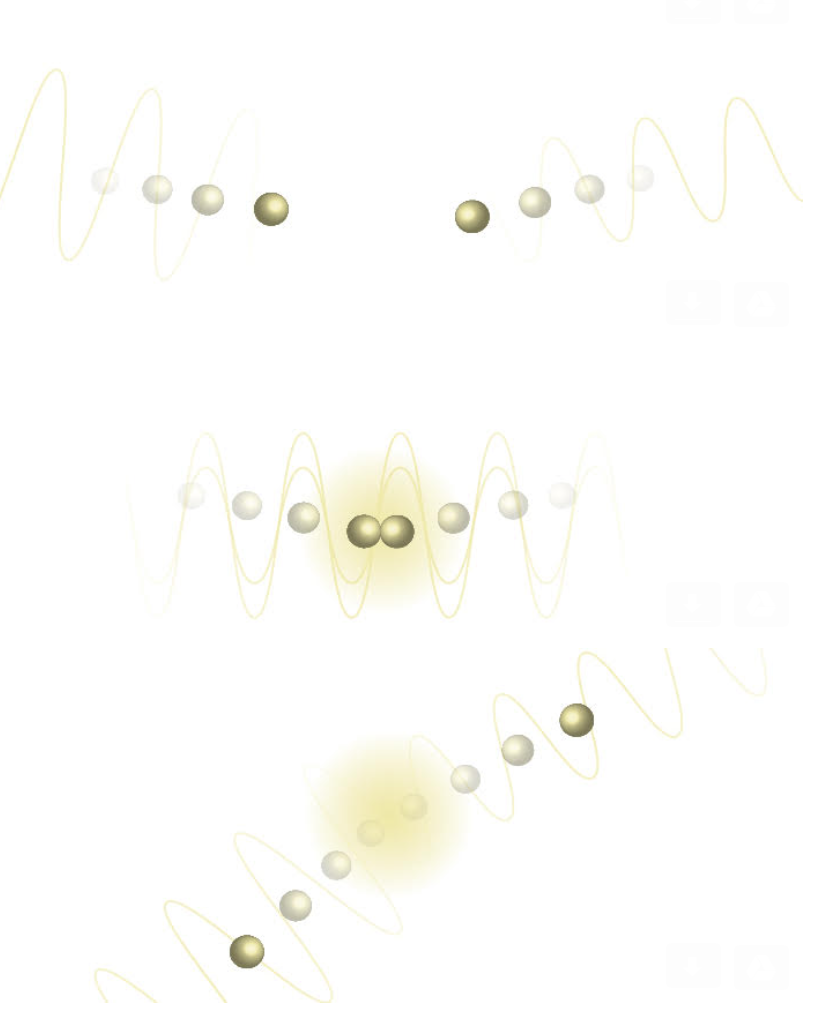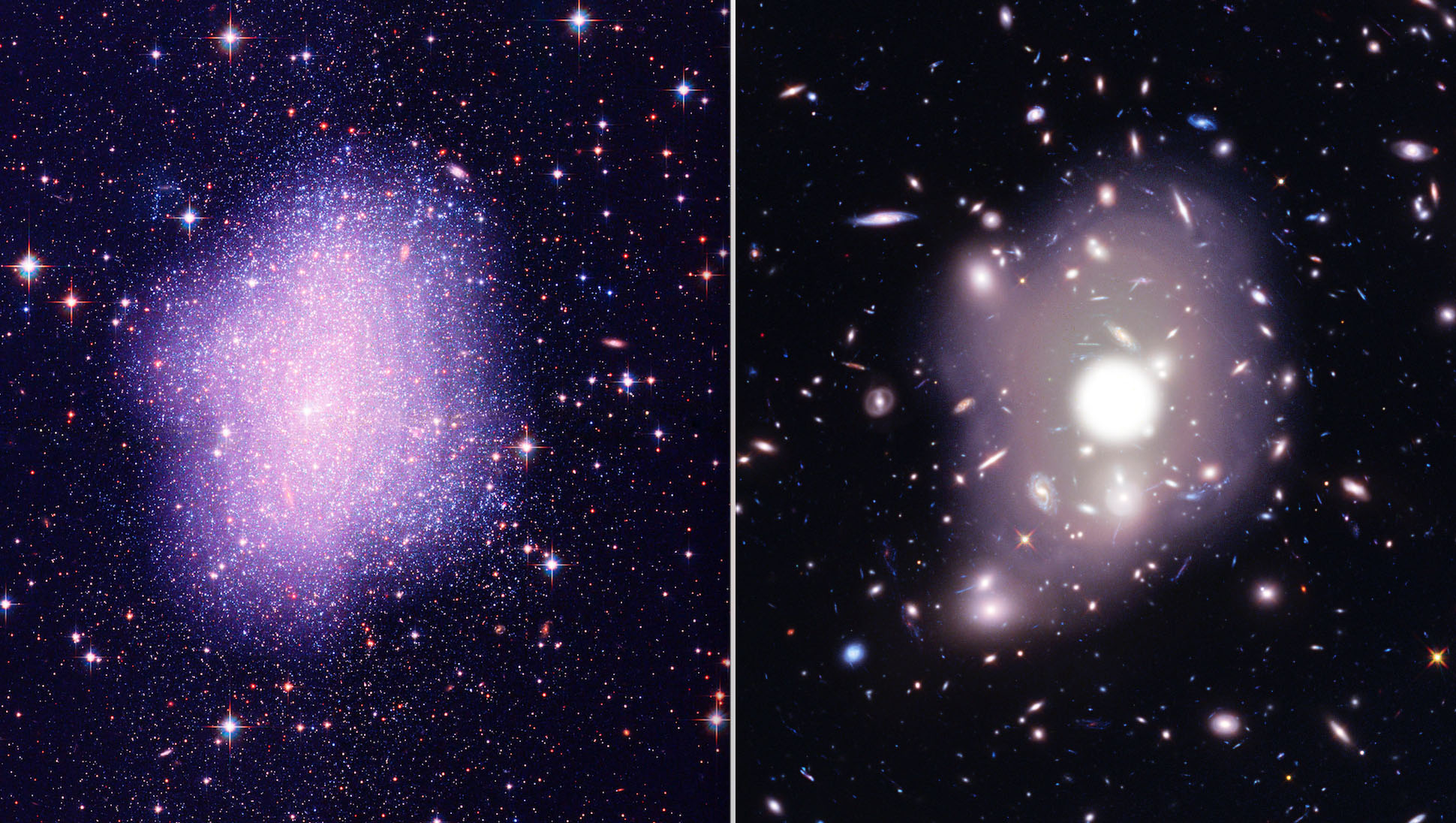Why does dark matter behave differently in small galaxies than in large ones?
The most important characteristic of dark matter is that it interacts only by way of gravity. And as the only one of the four fundamental forces, gravity is always attractive. Therefore, no matter where it occurs, dark matter must always collect at the mass center of the respective structure, regardless of whether it is a small galaxy or a giant galaxy cluster.
But in reality, things look quite different: in galaxy clusters, dark matter exhibits the expected behavior, but in smaller galaxies it is distributed much more widely than it should be. This arrangement could be explained in that the dark matter particles bounce off each other like billiard balls, scattering them. The result of this scattering process is a much wider distribution.
But why does this happen only in dwarf galaxies? Researchers at the Kavli Institute for the Physics and Mathematics of the Universe (IPMU) believe that they have discovered the answer. Their idea: in a dwarf galaxy, dark matter moves more slowly; it has less energy. In a galaxy cluster, in contrast, it is faster and has more energy. Apparently, the particles must meet each other with very specific energy levels for scattering to occur, and these resonance conditions occur only in small galaxies. Elsewhere, dark matter is too fast (or too slow) to bounce off each other.
Such resonance conditions are not uncommon in the universe. They might also reveal something about dark matter itself, of which we know precious little. “It may also be a sign that our world has more dimensions than we can see,” says the Chinese physicist Xiaoyong Chu. “If a particle moves in extra dimensions, it therefore has additional energy. For us, who don’t see the extra dimension, this additional energy appears as mass according to Einstein’s E=mc2. Maybe some particles move twice as fast in the extra dimension, so that their mass is exactly twice the mass of the dark matter.”


